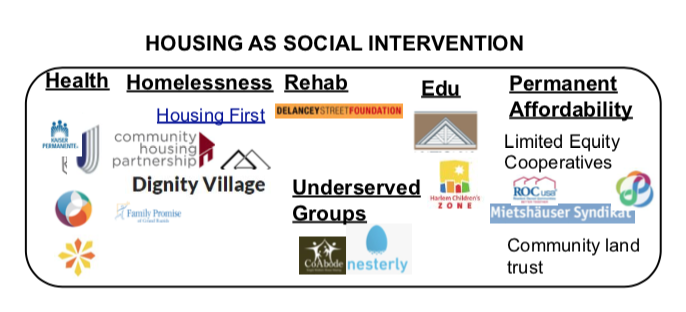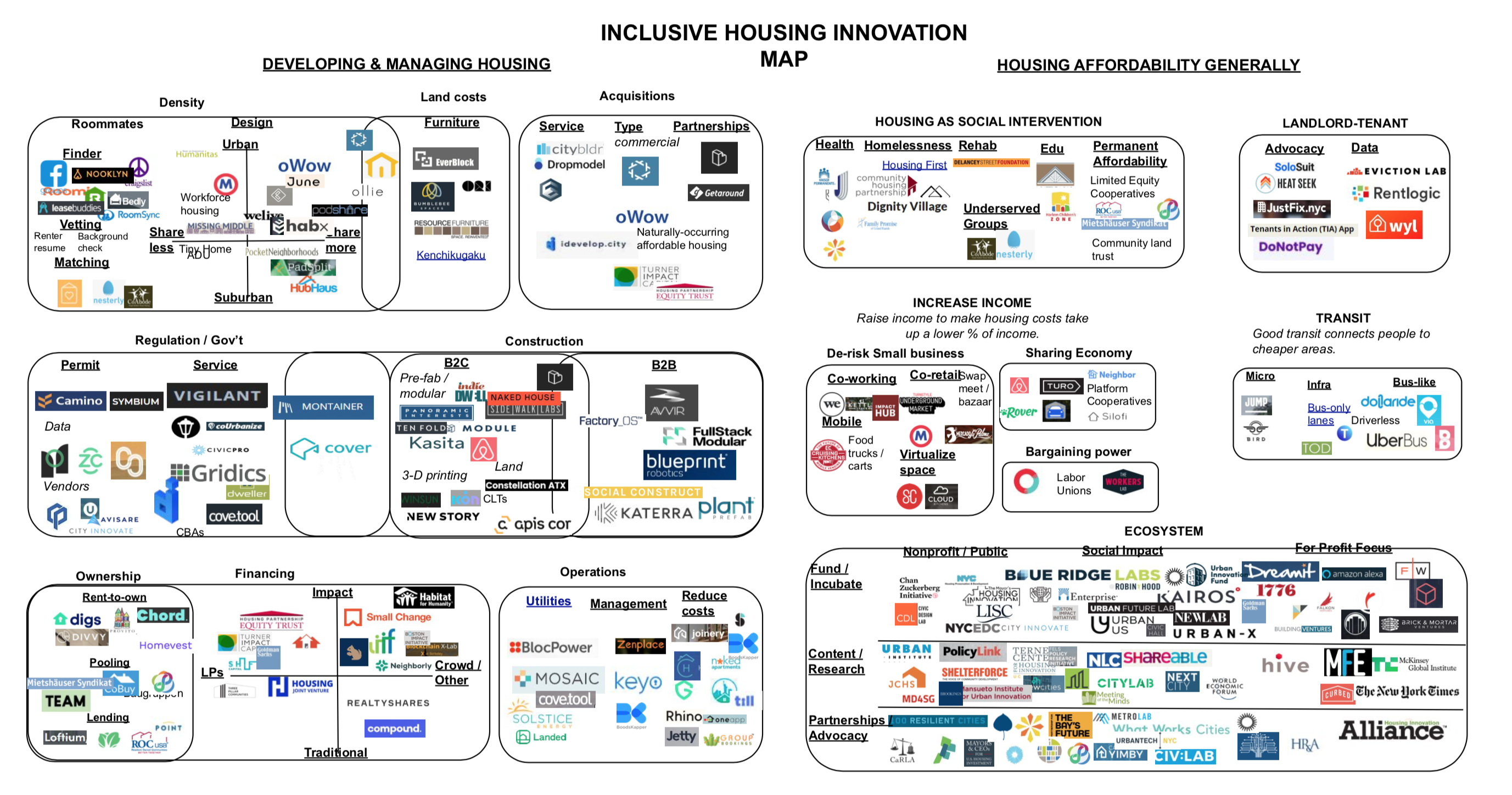funding
Auto Added by WPeMatico
Auto Added by WPeMatico
TodayTix, a mobile ticketing company that makes it easy and relatively affordable to go to Broadway shows and other live performances, is announcing a new $73 million round of funding led by private equity firm Great Hill Partners.
Founded in 2013, the company initially served as the mobile equivalent of New York’s TKTS booths for discounted, last-minute theater tickets. TodayTix says it’s now sold more than 4 million tickets, representing 8% of annual Broadway ticket sales and 4% for London’s West End.
Beyond that, co-founder and CEO Brian Fenty said that a little over 10% of the tickets sold now fall outside “theater and performing arts, narrowly defined,” covering things like comedy shows and experiential theater.
“I think to the consumer, we will be a holistic ecosystem to engage in the city’s art and experiences,” Fenty predicted. “However culture is defined … we want to be their partner in discovering those things.”
To do that, TodayTix will add more cities to its current list of 15 markets. Fenty said this expansion is driven by existing collaborations (like launching in Australia through its partnership with “Harry Potter and the Cursed Child”) and by seeing where people are already downloading the TodayTix app. His ultimate goal is to be “geographically agnostic.”
Fenty also said the company will continue investing in the TodayTix Presents program, through which the company puts on its own shows (albeit at a much smaller scale than a Broadway production).

And of course he wants to improve the app itself, introducing more personalization and curation — Fenty pointed to Netflix and Amazon as models. After all, he said TodayTix is currently offering tickets to 297 shows in New York alone, so it needs ways to “effectively guide people through that.”
“We’re actually a media company, with our own content and perspective — not on the quality of the shows, but to have a point of view on how users should and could engage with this content,” he said.
He added that those improvements will include more basic things, like the process of purchasing a ticket: “The hardest part is to complete the purchase in 30 seconds or less, as compared to the average ticketing platform, which is somewhere between 3 and 7 minutes … How we continue to squish that conversion?”
Fenty is also hoping to work more closely with show producers, providing them with data about which shows are selling, as well as helping them use data to find the most effective ways to promote themselves.
TodayTix says it’s raised a total of $90 million since it announced its Series B back in February 2016. Fenty told me the new round includes a direct investment in the company, as well as secondary purchases of TodayTix shares from previous investors.
“TodayTix is rapidly changing the way millennials and other consumers connect with live cultural experiences,” said Great Hill Managing Partner Michael Kumin in a statement. “We look forward to working with Brian, [co-founder] Merritt [Baer] and their talented management team to expand the Company’s product and service offerings and accelerate its push into new geographies.”
Powered by WPeMatico
This week on Extra Crunch, I am exploring innovations in inclusive housing, looking at how 200+ companies are creating more access and affordability. Yesterday, I focused on startups trying to lower the costs of housing, from property acquisition to management and operations.
Today, I want to focus on innovations that improve housing inclusion more generally, such as efforts to pair housing with transit, small business creation, and mental rehabilitation. These include social impact-focused interventions, interventions that increase income and mobility, and ecosystem-builders in housing innovation.
Nonprofits and social enterprises lead many of these innovations. Yet because these areas are perceived to be not as lucrative, fewer technologists and other professionals have entered them. New business models and technologies have the opportunity to scale many of these alternative institutions — and create tremendous social value. Social impact is increasingly important to millennials, with brands like Patagonia having created loyal fan bases through purpose-driven leadership.
While each of these sections could be their own market map, this overall market map serves as an initial guide to each of these spaces.

These innovations address:
Powered by WPeMatico
In this section of my exploration into innovation in inclusive housing, I am digging into the 200+ companies impacting the key phases of developing and managing housing.
Innovations have reduced costs in the most expensive phases of the housing development and management process. I explore innovations in each of these phases, including construction, land, regulatory, financing, and operational costs.

This is one of the top three challenges developers face, exacerbated by rising building material costs and labor shortages.
Powered by WPeMatico
Housing is big money. The industry has trillions under management and hundreds of billions under development.
And investors have noticed the potential. Opendoor raised nearly $1.3 billion to help homeowners buy and sell houses more quickly. Katerra raised $1.2 billion to optimize building development and construction, and Compass raised the same amount to help brokers sell real estate better. Even Amazon and Airbnb have entered the fray with high-profile investments.
Amidst this frenetic growth is the seed of the next wave of innovation in the sector. The housing industry — and its affordability problem — is only likely to balloon. By 2030, 84% of the population of developed countries will live in cities.
Yet innovation in housing lags compared to other industries. In construction, a major aspect of housing development, players spend less than 1% of their revenues on research and development. Technology companies, like the Amazons of the world, spend nearly 10% on average.
Innovations in older, highly regulated industries, like housing and real estate, are part of what Steve Case calls the “third wave” of technology. VCs like Case’s Revolution Fund and the SoftBank Vision Fund are investing billions into what they believe is the future.
These innovations are far from silver bullets, especially if they lack involvement from underrepresented communities, avoid policy and ignore distributive questions about who gets to benefit from more housing.
Yet there are hundreds of interventions reworking housing that cannot be ignored. To help entrepreneurs, investors and job seekers interested in creating better housing, I mapped these innovations in this package of articles.
To make sense of this broad field, I categorize innovations into two main groups, which I detail in two separate pieces on Extra Crunch. The first (Part 1) identifies the key phases of developing and managing housing. The second (Part 2) section identifies interventions that contribute to housing inclusion more generally, such as efforts to pair housing with transit, small business creation and mental rehabilitation.
Unfortunately, many of these tools don’t guarantee more affordability. Lowering acquisition costs, for instance, doesn’t mean that renters or homeowners will necessarily benefit from those savings. As a result, some tools likely need to be paired with others to ensure cost savings that benefit end users — and promote long-term affordability. I detail efforts here so that mission-driven advocates as well as startup founders can adopt them for their own efforts.
Today:
Coming Tomorrow:

Please feel free to let me know what else is exciting by adding a note to your LinkedIn invite here.
If you’re excited about this topic, feel free to subscribe to my future of inclusive housing newsletter by viewing a past issue here.
Powered by WPeMatico
Locus, an Indian startup that uses AI to help businesses map out their logistics, has raised $22 million in Series B funding to expand its operations in international markets.
The financing round for the four-year-old startup was led by Falcon Edge Capital and Tiger Global. Existing investors Exfinity Venture Partners and Blume Ventures also participated in the round. The startup has raised $29 million to date, Nishith Rastogi, co-founder and CEO of Locus, told TechCrunch in an interview.
Locus works with companies that operate in FMCG, logistics and e-commerce spaces. Some of its clients include Tata Group companies, Myntra, BigBasket, Lenskart and Bluedart. It helps these clients automate their logistics workload — tasks such as planning, organizing, transporting and tracking of inventories, and finding the best path to reach a destination — that have traditionally required intensive human labor.
“Say a Lenskart representative is visiting a house or an office to offer an eye checkup, and suddenly two more people there are interested in getting their eyes checked. The representative could attend these two new potential clients, or wrap things up with the first client and take care of his or her next appointment,” said Rastogi.
Locus looks at a client’s past data, identifies patterns and automates these kind of decisions on a large scale. In an example shared earlier with TechCrunch, Rastogi talked about how Locus had built a scanner for e-commerce companies for measuring products.
Rastogi said he will use the fresh capital to develop products and expand Locus in Southeast Asian and North American markets. The startup says half of its 110-person workforce is outside of India. Half of the IP it has built and the revenue it generates comes from its team outside of India.
He said the startup has spent the recent quarters studying these international markets, and has secured some anchor clients to expand the business. Locus is operationally profitable already and any additional capital goes into expanding its business, he added.
The logistics market in India has long been riddled with challenges. A growing number of startups, including BlackBuck — which raised $150 million last week — have emerged in recent years to tackle these problems.
The new funding also illustrates Tiger Global’s new strategy for the Indian market. The VC fund, which has invested in B2C businesses Flipkart and Ola in India, has made a number of investments in B2B startups in recent months. Last month, it invested $90 million in agritech supply chain startup Ninjacart, and weeks later, it gave cloud-based solutions provider Zenoti $50 million. It also participated in customer marketing service ClearTap’s $26 million round.
Powered by WPeMatico
Don’t like the idea of your baby guzzling down liquid candy all day? It may surprise you to find corn syrup is the main ingredient in most infant formulas in the U.S. That’s where Bobbie, a Bay Area-based baby formula delivery startup promising only wholesome ingredients, hopes to fill in.
Just go down the baby food aisle of any supermarket in America and start reading the ingredients and you’ll likely find corn syrup, soy bean oil, glucose syrup, maltodextrin and palm oil at the top. Even “organic” options often add these ingredients.
While it’s high-fructose corn syrup we should be most concerned with when it comes to diabetes (and some doctors might even recommend adding some sort of syrup to your baby’s diet to combat constipation), corn syrup is not something some parents may want their baby drinking all day.
 Touting itself as “European” style, Bobbie’s first product features fresh, grass-fed cows’ milk as the main ingredient. What it does not include, however, is key for the concerned parent. There’s zero corn syrup, maltodextrin or other artificial sugars or unhealthy oils.
Touting itself as “European” style, Bobbie’s first product features fresh, grass-fed cows’ milk as the main ingredient. What it does not include, however, is key for the concerned parent. There’s zero corn syrup, maltodextrin or other artificial sugars or unhealthy oils.
Of course, some babies might not be able to stomach the lactose from bovine sources, but grass-fed and corn syrup-free is music to the ears of many parents (me included) who’ve resorted to ordering bulk from Germany just to avoid feeding our kids Snickers in a bottle.
Yes, it seems crazy to order all the way from Europe when there are so many choices here in the U.S. — and there are some formula manufacturers here making an effort to offer better options — but finding something that meets the simple standard of no sugar, corn syrup or processed oils in the baby food is weirdly difficult.
The other nugget Bobbie provides is delivery. Heaven knows every second is precious when you are a new parent. Delivery can be an especially big help in maintaining some semblance of order in those early days. Sure, Amazon delivers many baby things — it even ships the popular, German-based Hipp brand of formula — but it comes at a premium price and will only ship in bulk.
You can also get the European brands delivered straight from sites like Organic Start, Huggable and a number of others easily Googled. But for those wanting something local, slightly less expensive and with presumably less of a carbon footprint than shipping from another continent, Bobbie is here for you (and we’re told will be delivered with a soft knock on the door, in case baby is sleeping).
The company was founded by two San Francisco moms and former Airbnb operation leaders Laura Modi and Sarah Hardy. Both found out how hard it was, after returning from maternity leave, to pump each day while keeping up with the demands of the job. However, neither of them liked the formula options they found at the grocery store for their own little broods.
Modi and Hardy thought it was time to give parents a more local choice in healthy formula. The two founded the company in 2018 and pulled in $2.5 million in funding last year from Bolt Capital, Nextview Ventures, Lakehouse and Precursor while Modi was pregnant, closing the round a week before giving birth to her baby boy.
Bobbie will (appropriately) begin taking orders this Mother’s Day. Unfortunately, Bobbie only delivers to the Bay Area for now. However, those interested can order one 400 g trial box for $27, which should make about 22 bottles at 6 ounces per bottle, according to a company spokesperson. You can also sign up for the subscription package for $23 per box.
Bobbie Baby – Evolving the conversation of parenthood from Laura Modi on Vimeo.
Powered by WPeMatico
Lora DiCarlo, a startup coupling robotics and sexual health, has $2 million to shove in the Consumer Electronics Show’s face.
The same day the company was set to announce their fundraise, The Consumer Technology Association, the event producer behind CES, decided to re-award the Bend, Oregon-based Lora DiCarlo with the innovation award it had revoked from the company ahead of this year’s big event.
In January, the CTA nullified the award it had granted the business, which is building a hands-free device that uses biomimicry and robotics to help people achieve a blended orgasm by simultaneously stimulating the G spot and the clitoris. Called Osé, the device uses micro-robotic technology to mimic the sensation of a human mouth, tongue and fingers in order to produce a blended orgasm for people with vaginas.

Lora DiCarlo’s debut product, Osé, set to release this fall. The company says the device is currently undergoing changes and may look different upon release.
“CTA did not handle this award properly,” CTA senior vice president of marketing and communications Jean Foster said in a statement released today. “This prompted some important conversations internally and with external advisors and we look forward to taking these learnings to continue to improve the show.”
Lora DiCarlo had applied for the CES Innovation Award back in September. In early October, the CTA notified the company of its award. Fast-forward to October 31, 2018 and CES Projects senior manager Brandon Moffett informed the company they had been disqualified. The press storm that followed only boosted Lora DiCarlo’s reputation, put Haddock at the top of the speakers’ circuit and proved, once again, that sexuality is still taboo at CES and that the gadget show has failed to adapt to the times.
In its original letter to Lora DiCarlo, obtained by TechCrunch, the CTA called the startup’s product “immoral, obscene, indecent, profane or not in keeping with the CTA’s image” and that it did “not fit into any of [its] existing product categories and should not have been accepted” to the awards program. CTA later apologized for the mishap before ultimately re-awarding the prize.
At the request of the CTA, Haddock and her team have been working with the organization to create a more inclusive show and better incorporate both sextech companies and women’s health businesses.
“We were a catalyst to a huge, resounding amount of support from a very large community of people who have been quietly thinking this is something that needs to happen,” Haddock told TechCrunch. “For us, it was all about timing.”
Lora DiCarlo plans to use its infusion of funding, provided by new and existing investors led by the Oregon Opportunity Zone Limited Partnership, to hire ahead of the release of its first product. Pre-orders for the Osé, which will retail for $290, will open this summer with an expected official release this fall.
Haddock said four other devices are in the pipeline, one specifically for clitoral stimulation, another for clitoral and vaginal stimulation, one for anywhere on the body and the other, she said, is a different approach to the way people with vulvas masturbate.
“We are aiming for that hands-free, human experience,” Haddock said. “We wanted to make something really interesting and very different and beautiful.”
Next year, Haddock says they plan to integrate their products with virtual reality, a step that will require a larger boost of capital.
Haddock and her employees don’t plan to quiet down any time soon. With their newfound fame, the team will continue supporting the expanding sextech industry and gender equity within tech generally.
“We’ve realized our social mission is so important,” Haddock said. “Gender equality, at its source, is about sex. We absolutely demonize sex and sexuality … When you talk about removing sexual stigmas, you are also talking about removing gender stigmas and creating gender equity.”
Powered by WPeMatico
Sumo Logic, a cloud data analytics and log analysis company, announced a $110 million Series G investment today. The company indicated that its valuation was “north of a billion dollars,” but wouldn’t give an exact figure.
Today’s round was led by Battery Ventures with participation from new investors Tiger Global Management and Franklin Templeton. Other unnamed existing investors also participated, according to the company. Today’s investment brings the total raised to $345 million.
When we spoke to Sumo Logic CEO Ramin Sayar at the time of its $75 million Series F in 2017, he indicated the company was on its way to becoming a public company. While that hasn’t happened yet, he says it is still the goal for the company, and investors wanted in on that before it happened.
“We don’t need to raise capital. We had plenty of capital already, but when you bring on crossover investors and others in this stage of a company, they have minimum check sizes and they have a lot of appetite to help you as you get ready to address a lot of the challenges and opportunities as you become a public company,” he said.
He says the company will be investing the money in continuing to develop the platform, whether that’s through acquisitions, which of course the money would help with, or through the company’s own engineering efforts.
The IPO idea remains a goal, but Sayar was not willing or able to commit to when that might happen. The company clearly has plenty of runway now to last for quite some time.
“We could go out now if we wanted to, but we made a decision that that’s not what we’re going to do, and we’re going to continue to double down and invest, and therefore bring some more capital in to give us more optionality for strategic tuck-ins and product IP expansion, international expansion — and then look to the public markets [after] we do that,” he said.
Dharmesh Thakker, general partner at investor Battery Ventures, says his firm likes Sumo Logic’s approach and sees a big opportunity ahead with this investment. “We have been tracking the Sumo Logic team for some time, and admire the company’s early understanding of the massive cloud-native opportunity and the rise of new, modern application architectures,” he said in a statement.
The company crossed the $100 million revenue mark last year and has 2,000 customers, including Airbnb, Anheuser-Busch and Samsung. It competes with companies like Splunk, Scalyr and Loggly.
Powered by WPeMatico
Indian edtech startup CollegeDekho, which helps students connect with prospective colleges and keep track of exams, has raised $8 million in a Series B round.
The new financing round for the four-year-old Gurgaon-based startup was led by its parent company GirnarSoft Education and London-based private equity investor Man Capital, which also participated in the startup’s Series A round last year.
Ruchir Arora, founder and CEO of CollegeDekho, told TechCrunch in an interview that the startup will use the capital to expand its presence in more schools and also begin connecting students with international educational institutions. The startup, which has raised $13 million to date, will also ramp up its research and development efforts.
CollegeDekho, Hindi for search for college, maintains a website that helps students identify the right career choices for them. The website has a chatbot that answers some of the questions students have while logging their responses, and other activities such as the kind of colleges they are searching for, their preferred location and budget.
Arora said the startup, which also has about 3,000 call center representatives and counselors, builds profiles of students to make college recommendations. He said each month the site observes more than five million sessions from students. Last year, more than 8,000 students used CollegeDekho to take admission in a college.
Parents in India, a country of 1.3 billion people with not the best literacy record, see education as an upward mobility for their children. Each year, more than six to seven million students go to a college. But because of a range of factors that can include cultural stigma, many students end up choosing the wrong path and thus don’t excel in college. Indeed, many students ultimately don’t pursue the subject they are best suited for, Arora said, and that’s where CollegeDekho aims to make an impact.

Most high school students in India often gravitate toward engineering or medical college, as a result of which, each year India produces many engineers and doctors who struggle for years to find a job. Arora said his startup looks at more than 2,000 career paths a student could pursue.
What works in favor of Arora is that the country will continue to turn out millions of students each year who will be looking to go to a college soon. It also helps that CollegeDekho is operationally profitable, Arora said, adding that it generates about $3.2 million in revenue in a year. Any additional cash the startup raises will go into its expansion, he said.
CollegeDekho charges a nominal fee from students, and also takes a cut when they join a college. More than 36,000 educational institutes are listed on CollegeDekho. The startup also works with more than 400 colleges to conduct an exam for direct admission, and there too it earns a cut.
India’s education market, estimated to grow to $5.7 billion by next year, has emerged as a lucrative opportunity for startups and VCs alike. Bangalore-based Byju’s, which helps millions of students in India prepare for competitive exams, raised $540 million from Naspers and others late last year. Unacademy, which like Byju’s offers online tutoring to students, has raised more than $38.5 million to date.
A legion of other education startups today are vying for the attention of students in the nation. Noida-based AskIITians, not too far from the offices of CollegeDekho, aims to help school-going students prepare for medical and engineering exams. Extramarks, also based in Noida, operates in the same space as AskIITians. Reliance Industries, owned and controlled by India’s richest man, Mukesh Ambani, bought a 38.5% stake in the startup three years ago.
Powered by WPeMatico
Sitting silently with your eyes closed isn’t fun, but it’s good for you… so you probably don’t meditate as often as you’d like. In that sense, it’s quite similar to exercise. But people do show up when prodded by the urgency and peer pressure of scheduled group cycling or aerobics classes. What’s still in the way is actually hauling your lazy butt to the gym, hence the rise of Peloton’s in-home stationary bike with attached screen streaming live and on-demand classes. My butt is particularly lazy, but I’ve done 80 Peloton rides in four months. The model works.
Now that model is coming to mindfulness with the launch of Journey LIVE, a subscription iOS app offering live 15-minute group meditation classes. With sessions starting most waking hours, instructors that interact with you directly and a sense of herd mentality, you feel compelled to dedicate the time to clearing your thoughts. By video and voice, the teachers introduce different meditation theories and practices, guide you through and answer questions you can type in. Each day, Journey also provides a newly recorded on-demand session in case you need a class on your own schedule.

” ‘I tried Headspace’ or ‘I tried Calm .’ With a lot of the current meditation apps, people go on but they drop off very quickly,” says Journey founder and CEO Stephen Sokoler. “It means that there’s an interest in meditating and having a better life but people fall off because meditating alone is hard, it’s confusing, it’s boring. Meditating with a live teacher who can connect with you and say your name, who makes you feel seen and heard makes a huge difference.”
 Journey subscriptions start at $19.99 per month after a week-long free trial. That feels a bit steep, but prices drop to $7.99 if paid annually with the launch discount, or you can dive in with a $399 lifetime pass. The challenge will be keeping users from abandoning meditation and then their subscription without resorting to growth hacking and annoying notifications that are antithetical to the whole concept. Journey has now raised a $2.4 million seed round led by Canaan and joined by Brooklyn Bridge Ventures, Betaworks and more to get the company rolling.
Journey subscriptions start at $19.99 per month after a week-long free trial. That feels a bit steep, but prices drop to $7.99 if paid annually with the launch discount, or you can dive in with a $399 lifetime pass. The challenge will be keeping users from abandoning meditation and then their subscription without resorting to growth hacking and annoying notifications that are antithetical to the whole concept. Journey has now raised a $2.4 million seed round led by Canaan and joined by Brooklyn Bridge Ventures, Betaworks and more to get the company rolling.
Sokoler’s own journey could set an example of the possibilities of sticking with it. “Meditation changed my life. I was fortunate enough to move to Australia, find a book on Buddhism, and then I had the willpower to start practicing meditation every day,” he tells me. “I lost 85 pounds. People ask me how I lost the weight and they expect me to say a diet like keto or Atkins, but it was because of the program I was in.” Suddenly able to sit quietly with himself, Sokoler didn’t need food to stay occupied or feel at ease.
The founder saw the need for new sources of happiness while working in employee rewards and recognition for 12 years. He built up a company that makes mementos for commemorating big business deals. Meditation proved to him the value of developing inner quiet, whether to inspire happiness, calm, focus or deeper connections to other people and the world. Yet the popular meditation apps ignored thousands of years of tradition when meditation would be taught in groups that give a naturally ethereal activity more structure. He founded Journey in 2015 to bring meditation to corporate environments, but now is hoping to democratize access with the launch of Journey LIVE.
“You could think of it as a real-life meditation community or studio in the palm of your hand,” Sokoler explains. Instructors greet you when you join a session in the Journey app and can give you a shout-out for practicing multiple days in a row. They help you concentrate on your breath while giving enough instruction to keep you from falling asleep. You can see or hide a list of screen names of other participants that make you feel less isolated and encourage you not to quit.
Finding a market amidst the popular on-demand meditation apps will be an uphill climb for Journey LIVE. While classes recorded a long time ago might not be as engaging, they’re convenient and can dig deep into certain styles and intentions. Calm and Headspace run around $12.99 per month, making them cheaper than Journey LIVE and potentially easier to scale.
But Sokoler says his app’s beta testing saw better retention than competitors. “If you’ve ever been to the New York Public Library, there’s so many books versus going to a local curated bookstore where something is right there for you. This is much more approachable, much more accessible,” Sokoler tells me. “There’s a paradox of choice, and having so many options makes it hard for people to stick with it and come back every single day.”
With our phones and Netflix erasing the downtime we used to rely on to give our brain a break or reflect on our day, life is starting to feel claustrophobic. We’re tense, anxious and easily overwhelmed. Meditation could be the antidote. Unlike with cycling or weightlifting, you don’t need some expensive Peloton bike or Tonal home gym. What you need is consistency, and an impetus to slow down for 15 minutes you could easily squander. We’re a tribal species, and Journey LIVE group classes could use camaraderie to lure us into the satisfying void of nirvana.
Powered by WPeMatico